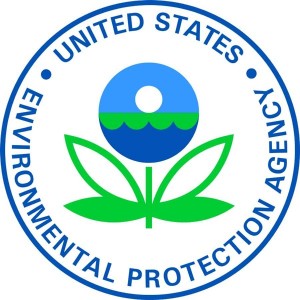EPA administrator defends allowing Florida to write its own water pollution rules
The EPA seal (Pic via sentryjournal.com) The Environmental Protection Agency has come under fire for its decision to allow the state of Florida to write its own water pollution rules (known as “numeric nutrient criteria”). EPA Regional Administrator Gwendolyn Keyes Fleming is now firing back, writing that the Agency commends the state Department of Environmental Protection for its draft of a proposed standard. A host of environmental groups filed suit in 2008, seeking to compel the EPA to implement a strict set of water pollution standards in Florida, arguing that the state was in violation of the Clean Water Act.
Jul 31, 20202.8K Shares560.9K Views
The Environmental Protection Agency has come under fire for its decision to allow the state of Florida to write its own water pollution rules (known as “numeric nutrient criteria”). EPA Regional Administrator Gwendolyn Keyes Fleming is now firing back, writing that the Agency commends the state Department of Environmental Protection for its draft of a proposed standard.
The EPA seal (Pic via sentryjournal.com)
A host of environmental groups filed suit in 2008, seeking to compel the EPA to implement a strict set of water pollution standards in Florida, arguing that the state was in violation of the Clean Water Act. In 2009, following what many have deemed years of stalling on the part of the state department, the EPA agreed to implement its criteria.
Industry leaders and lawmakers have blasted the EPA’s mandate, arguing that the state of Florida should implement its own standards, without federal intervention. The state did have its chance, however: As early as 1998, the EPA told the state to develop its own standards.
Fast-forward to 2011, and the state is finally developing its own criteria — with the approval of the EPA.
A recent St. Petersburg Timeseditorialaccused the EPA of rewarding Florida “for dragging its feet on cleaning up dirty waters,” a sentiment shared by environmentalists who have championed tougher water standards in the state. Not so, says the EPA’s Keyes Fleming, in a responseto the editorial published today.
“The Clean Water Act envisions — and the EPA agrees — that states should have the primary role in establishing and implementing water quality standards for their waters, allowing them to innovate and respond to local water quality needs,” she writes. “These standards must meet the requirements of the act, but they need not be identical to standards the EPA would adopt on its own. The FDEP’s proposed standards, in our judgment, meet this test.”
According to Keyes Fleming, the Florida standards don’t mirror every aspect of the federal standards, but they come awfully close.
“The FDEP’s proposed criteria for estuaries are based on methodologies similar to what the EPA has been using in developing its own criteria,” she writes. “The FDEP’s numeric criteria for streams are very close to the EPA’s criteria but will be applied in combination with biological information. Although the EPA did not adopt this approach, we believe it is reasonable to factor in site-specific information.”
Florida currently relies on a narrative water quality standard, the wording of which(.pdf) has been criticized as too vague to be effective. The rule reads: ”In no case shall nutrient concentrations of a body of water be altered so as to cause an imbalance in natural populations of aquatic flora or fauna.”
Stricter criteria would specifically govern the amounts of phosphorus and nitrogen present in state waterways, and should lessen the amount of fish kills and large-scale algal blooms across Florida.

Hajra Shannon
Reviewer
Latest Articles
Popular Articles
